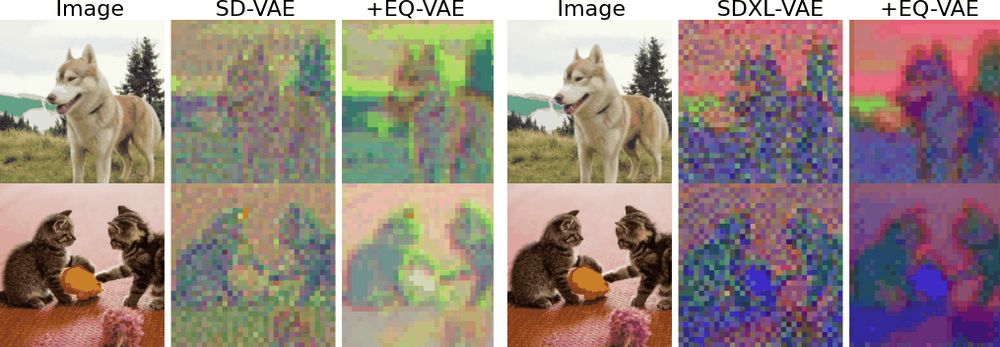



~23x faster convergence than baseline DiT/SiT.
~6x faster than REPA.🚀

~23x faster convergence than baseline DiT/SiT.
~6x faster than REPA.🚀
- Merged Tokens (MR): Efficient, keeps token count constant
- Separate Tokens (SP): More expressive, ~2x compute
Both boost performance, but MR hits the sweet spot for speed vs. quality.

- Merged Tokens (MR): Efficient, keeps token count constant
- Separate Tokens (SP): More expressive, ~2x compute
Both boost performance, but MR hits the sweet spot for speed vs. quality.
- Apply noise to both image latents and semantic features
- Fuse them into one token sequence
- Denoise both with standard DiT/SiT
That’s it.

- Apply noise to both image latents and semantic features
- Fuse them into one token sequence
- Denoise both with standard DiT/SiT
That’s it.

– Low-level image details (via VAE latents)
– High-level semantic features (via DINOv2)🧵

– Low-level image details (via VAE latents)
– High-level semantic features (via DINOv2)🧵
We trained DiT-B/2 on the resulting latents at each fine-tuning epoch. Even after just a few epochs, gFID drops significantly—showing how quickly EQ-VAE improves the latent space.

We trained DiT-B/2 on the resulting latents at each fine-tuning epoch. Even after just a few epochs, gFID drops significantly—showing how quickly EQ-VAE improves the latent space.
We find a strong correlation between latent space complexity and generative performance.
🔹 EQ-VAE reduces the intrinsic dimension (ID) of the latent manifold.
🔹 This makes the latent space simpler and easier to model.

We find a strong correlation between latent space complexity and generative performance.
🔹 EQ-VAE reduces the intrinsic dimension (ID) of the latent manifold.
🔹 This makes the latent space simpler and easier to model.
✅ Continuous autoencoders (SD-VAE, SDXL-VAE, SD3-VAE)
✅ Discrete autoencoders (VQ-GAN)

✅ Continuous autoencoders (SD-VAE, SDXL-VAE, SD3-VAE)
✅ Discrete autoencoders (VQ-GAN)
👉 It aligns reconstructions of transformed latents with the corresponding transformed inputs.

👉 It aligns reconstructions of transformed latents with the corresponding transformed inputs.
SOTA autoencoders reconstruct images well but fail to maintain equivariance in latent space.
✅ If you scale an input image, its reconstruction is fine
❌ But if you scale the latent representation directly, the reconstruction degrades significantly.

SOTA autoencoders reconstruct images well but fail to maintain equivariance in latent space.
✅ If you scale an input image, its reconstruction is fine
❌ But if you scale the latent representation directly, the reconstruction degrades significantly.


